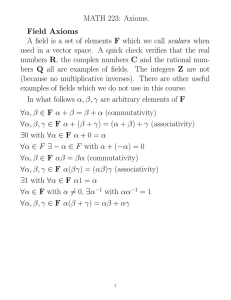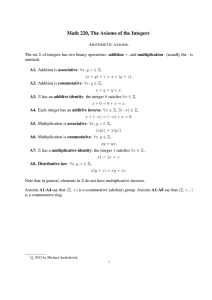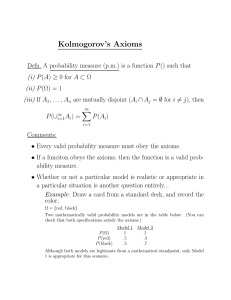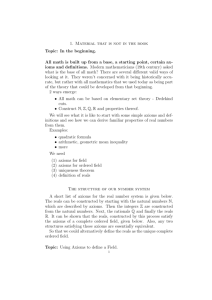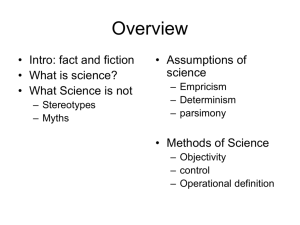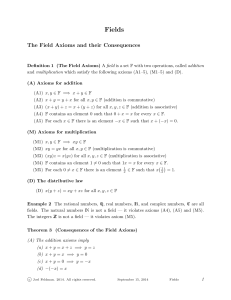Axioms for the Real Numbers
advertisement
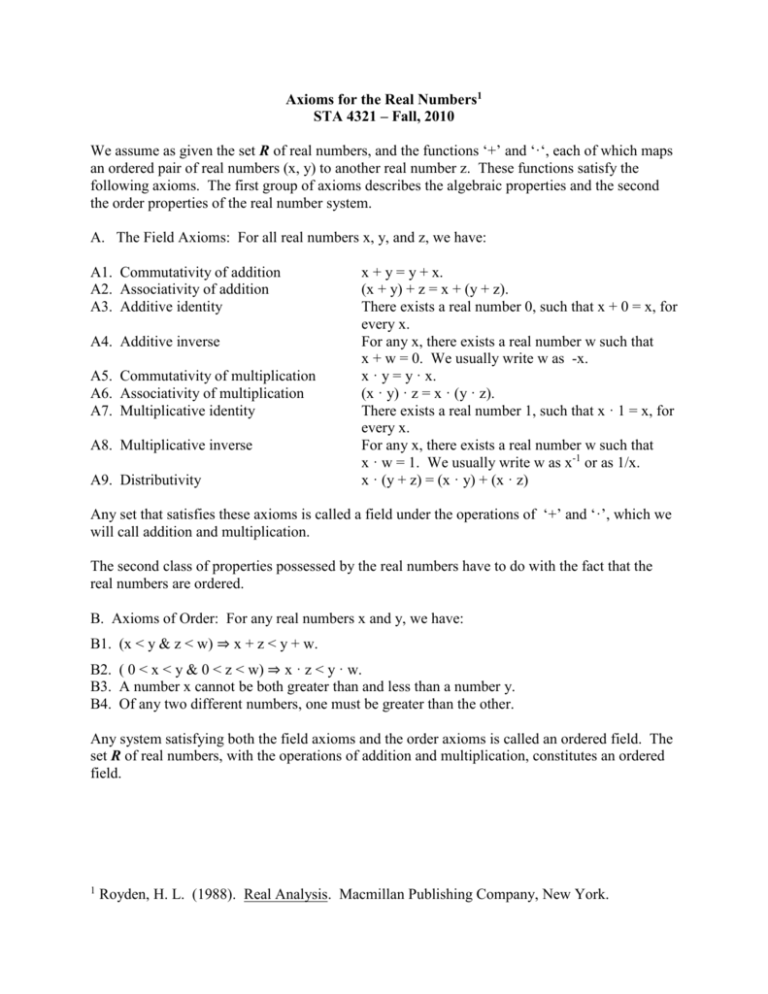
Axioms for the Real Numbers1 STA 4321 – Fall, 2010 We assume as given the set R of real numbers, and the functions ‘+’ and ‘·‘, each of which maps an ordered pair of real numbers (x, y) to another real number z. These functions satisfy the following axioms. The first group of axioms describes the algebraic properties and the second the order properties of the real number system. A. The Field Axioms: For all real numbers x, y, and z, we have: A1. Commutativity of addition A2. Associativity of addition A3. Additive identity A4. Additive inverse A5. Commutativity of multiplication A6. Associativity of multiplication A7. Multiplicative identity A8. Multiplicative inverse A9. Distributivity x + y = y + x. (x + y) + z = x + (y + z). There exists a real number 0, such that x + 0 = x, for every x. For any x, there exists a real number w such that x + w = 0. We usually write w as -x. x · y = y · x. (x · y) · z = x · (y · z). There exists a real number 1, such that x · 1 = x, for every x. For any x, there exists a real number w such that x · w = 1. We usually write w as x-1 or as 1/x. x · (y + z) = (x · y) + (x · z) Any set that satisfies these axioms is called a field under the operations of ‘+’ and ‘·’, which we will call addition and multiplication. The second class of properties possessed by the real numbers have to do with the fact that the real numbers are ordered. B. Axioms of Order: For any real numbers x and y, we have: B1. (x < y & z < w) ⇒ x + z < y + w. B2. ( 0 < x < y & 0 < z < w) ⇒ x · z < y · w. B3. A number x cannot be both greater than and less than a number y. B4. Of any two different numbers, one must be greater than the other. Any system satisfying both the field axioms and the order axioms is called an ordered field. The set R of real numbers, with the operations of addition and multiplication, constitutes an ordered field. 1 Royden, H. L. (1988). Real Analysis. Macmillan Publishing Company, New York.
